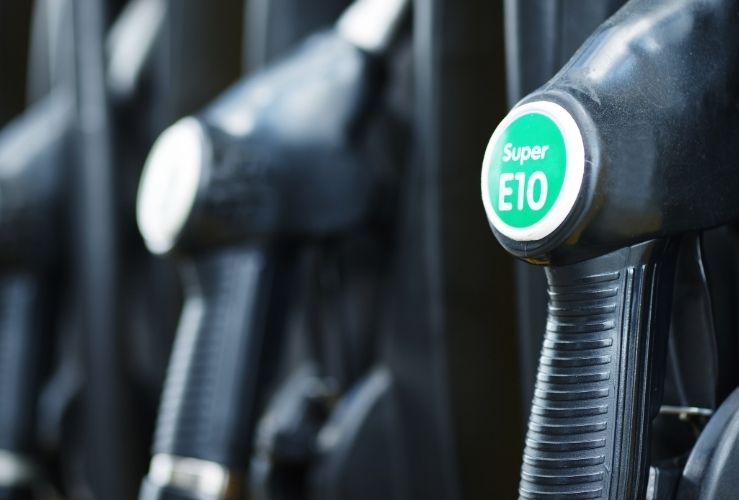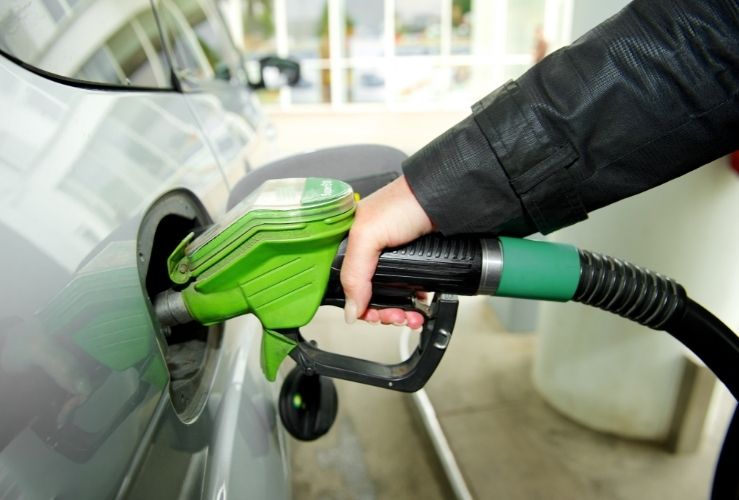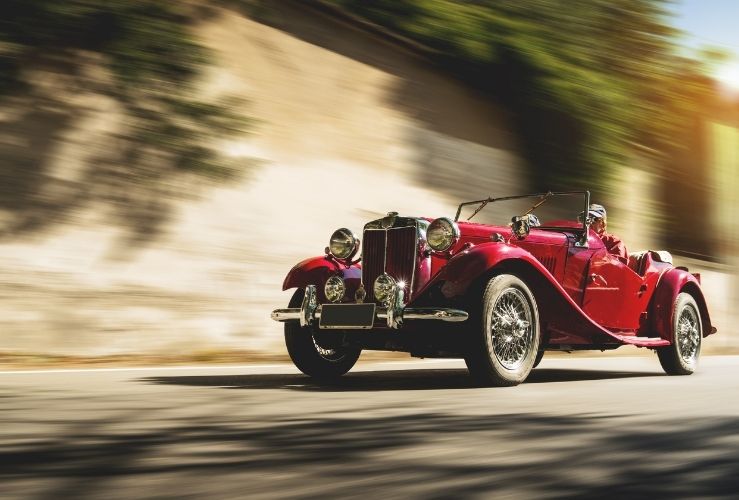Drivers are being urged to check that their vehicles will be compatible with the new eco-friendly E10 fuel that was recently launched in the UK

When was E10 fuel introduced in the UK?
The new E10 fuel rolled out nationwide across Britain from September 2021, replacing E5 fuel as the standard petrol grade.
Little over a year later, in November 2022, E10 was also introduced in Northern Ireland as the standard grade of unleaded petrol.
In preparation for this The Department for Transport (Dft) ran a nationwide E10 fuel UK awareness campaign in the summer to inform motorists of the fuel changes, promote the benefits of E10 petrol and to advise drivers to use the online checker to see if their vehicle will run on the new E10 fuel.

E10 petrol: What is E10 fuel - What's the difference?
The new eco-fuel, E10, is a biofuel made up of 90% regular unleaded and 10% ethanol.
As E10 fuel contains twice as much renewable ethanol as existing E5 petrol, it makes the new fuel less polluting compared with E5 petrol.
What is ethanol?
Ethanol is an organic chemical compound, naturally produced by the fermentation of sugars from a range of plants, including sugarcane and grains.
The plants grown to become the biofuel will reportedly absorb more carbon dioxide as they grow, than what will be released into the air during fuel production and combustion.
This makes ethanol a more environmentally friendly compound than traditional fuels such as petrol (gasoline) and diesel fuel. As ethanol partially offsets the greenhouse gas emissions produced by its production and use,
Some other key benefits of ethanol are:
- Ethanol is non-toxic
- Ethanol is easy to source
- Ethanol production results in valuable by-products such as high protein animal feed and stored CO2 which can help reduce the need to import these products
The benefits of E10 petrol fuel
E10 petrol is widely used around the world, including across Europe, the US and Australia.
As mentioned, ethanol partially offsets the greenhouse gas emissions produced by its production and use.
The main benefit of E10 petrol is that it reduces overall levels of CO2-based vehicle emissions.
Converting to E10 fuel as the standard petrol grade has the potential to cut transport Carbon dioxide emissions by 750,000 tonnes a year.
The UK government estimates the use of E10 petrol could cause a drop in CO2 carbon emissions equal to the effect of taking 350,000 cars off the road every year.
How can E10 fuel affect fuel economy?
E10 petrol can slightly reduce fuel economy (the number of miles you are able to drive on a gallon of fuel).
Since the introduction of E10 petrol as the UK’s standard fuel grade, some drivers have claimed that their fuel consumption has increased when using E10, leading them to fill up their vehicles much more regularly.
Wondering will your car's engine will perform better if you upgrade to premium petrol from E10? Well, it depends on your vehicle.
However, most drivers are unlikely to notice much difference at the petrol pumps when using E10 fuel in place of E5 as the fuel efficiency reduction is only around 1% - 1.6% - For the average driver, this equates to no more than half a tankful per year.
Other factors such as driving style or carrying unnecessary additional weight would have a more significant impact on fuel economy.
Learn how to improve your MPG (Miles Per Gallon)
Is it cheaper to fill up with E10 petrol than E5 petrol?
As E10 has become the standard petrol grade fuel type across UK forecourts so, widely available, you will normally find it to be the cheaper petrol out of E10 and the super-unleaded E5 alternative.
Non compatible cars: E10 fuel in older cars and classic cars
Whilst almost all (95%) petrol-powered vehicles on the road today are compatible with E10 petrol, it is estimated that as many as 634,000 petrol cars in the UK were not compatible with E10 fuel upon its launch in September 2021.
All cars manufactured after 2011 are pre-approved to use the E10 petrol fuel.
However, some older older vehicles with petrol engines, including classic cars and some from the early 2000s are not compatible with E10 fuel and continue to need E5 fuel.
As using E10 fuel in older cars is not compatible, supplies of E5 petrol will be maintained in the super petrol grade form of premium unleaded fuels. This means fuels such as Shell’s V-Power petrol and BP’s Ultimate fuel will still only have up to five percent ethanol.

E10 fuel and diesel cars: Can E10 fuel be used in diesel cars?
E10 fuel has become the standard fuel type for petrol cars only – It is not suitable for diesel cars.
Diesel – B7 fuel, is still be available at fuel stations for motorists to fill up their diesel vehicles.
What should I do if I put E10 petrol in a non-compatible vehicle?
Unlike filling up a diesel car with petrol, using a single tank of E10 petrol in a vehicle that is not compatible should not be a major problem. Just make sure you fill up with the correct E5 (‘97+ octane) petrol grade next time.
Prolonged use of E10 petrol in a non-compatible vehicle, however, may cause harm and is not recommended.
How could E10 fuel affect non compatible cars? Does E10 fuel damage engines?
Putting E10 fuel in a non-compatible car may make the car difficult to start and may cause pre-detonation (knocking) in older engines.
If you use E10 fuel in a non-compatible car over a long period of time, it may well cause lasting damage to the engine. Bioethanol has corrosive properties and according to the Department for Transport (DfT) potential issues include:
- Blocked fuel filters
- Damaged fuel pumps
- Degradation to flexible fuel hoses (fuel lines)
- Corroded carburettors
E10 compatible cars: Can you use E5 fuel or mix E10 and E5 fuels?
If your vehicle is E10 compatible, there’s no reason that you can’t mix the E5 and E10 grades of petrol.
It’s perfectly safe to mix E5 fuel and E10 fuels in the same tank or fill up with the super unleaded E5 if it is not possible to fill up with E10 as it is not available.
E10 compatibility checker UK
New vehicles manufactured from 2019 onwards should have an ‘E10’ and ‘E5’ label close to the filler cap showing the fuel(s) they can use.
If your vehicle does not have this label, to check if your vehicle is E10 fuel compatible the Government has launched an online E10 checker tool.
The online E10 checker tool for checking if your car, van, motorcycle or moped will be compatible with E10 fuel can be found at Check if your vehicle can run on E10 petrol - GOV.UK (www.gov.uk)
E10 fuel and clean air zones
E10 fuel will not affect whether you are able to drive in, or have to pay to enter, a clean air zone (CAZ), low emission zone (LEZ) or ultra-low emission zone (ULEZ); this is determined by your car’s Euro emissions standard and not by the fuel used.
New set of wheels?
Thinking about buying a new car? Here’s our 8 essentials for choosing a new vehicle.
Maybe you’re considering switching to a van from your current car? Then take a look at our article on the pros and cons of electric vs diesel vs petrol vans.




